how hard can it be
, Dresden
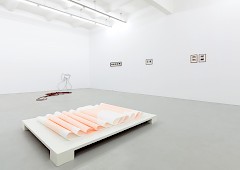
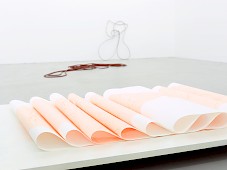
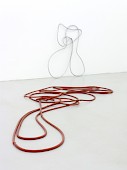
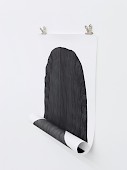
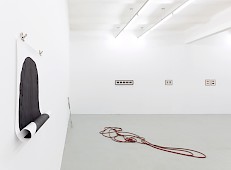
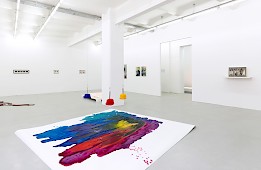

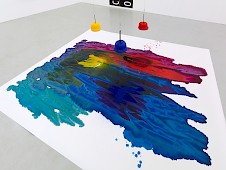
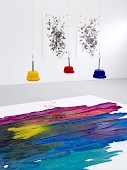
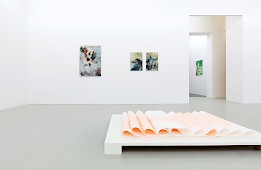


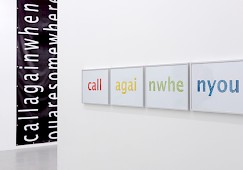
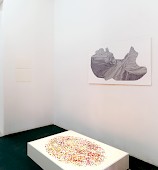
We are pleased to present young artists from Dresden in a group exhibition.
In art history there are many undulations, focus settings, places where art production is important and other venues that move to the rim. At the end of the 1990’s Dresden based artists were very present in the international focus. Now again we have the feeling that something exciting is developing in Dresden. We see encouraging, clever and fresh works. For our exhibition we have chosen positions whose artistic strategies were not previously represented in the gallery and therefore appeal to us especially.
Stephanie Lüning: On my way to find the image I behave like a scientist. I decide for an image carrier, develop prerequisites and observe features and possibilities. The process itself is calculated unpredictability; so the results are interpretations of the experimental arrangement.
Moe Matsuhashi: Most of my works refer to my surname Moe. One can translate Moe with “seed” or “nativeness”. My father gave my name to me: When he touched my mother’s belly during pregnancy he felt a green light similar to the one of a seed. Hence my parents decided to give the name Moe to me. The question how this went and which significance this incident had, has been of concern to me since my parents told me this story. My thoughts and artistic works hence knowingly or unknowingly revolve around the topic of heritage and (my) identity and the try to find out how this identity could be constructed.
Lisa Pahlke: Marker on paper, line per line, meter per meter, curved, buckled and hidden. The time is sensible; the drawing is modelled like a body and is oscillating between surface and spatiality. Landscapes grow, folds overlay and reliefs evolve. The structure is reminiscent of a slate surface, waters or topographic patterns.
Johanna Rüggen: The models of the works have always a private character and originate from second-hand bookshops and flea markets. The painting miniatures are based on concrete criteria; these are motifs that strongly correspond with the tradition of private photography hence one can nearly talk about a canon or an iconography of the private.
Daniel Rode: The texts originate from talks or are “found objects” from the public space. Transferred into the context of art–especially in a formally strict form -, these texts fully lose their own story. Central is the question of losing or gaining meaning after superelevation or marginalisation of text in the process of changing its context.
Sabine Schober: An essential part of my works is introspection. The fleeting images of thoughts are manifesting themselves in abstract seeming forms of vulnerable images. Often it is the dynamics of the materiality and of the process that detaches me from my starting intention. Images evolve that can be negated and transformed into other images. What comes after is always in relation to what went before.
Benjamin Stölzel: My current floor- and wall works are based on the principle of growing and overgrowing. The different materiality inspires the impression of chaos as well as elegance. I like the thought that it could be a non-verbal language with its own logic.
Wir freuen uns, junge Künstler aus Dresden in einer Gruppenausstellung zu präsentieren.
In der Kunstgeschichte gibt es viele Wellenbewegungen, Fokussierungen, Orte an denen die Kunstproduktion wichtig wird und wiederum andere Schauplätze, die an den Rand rücken. Zum Ende der 90er Jahre waren Dresdner Künstler stark im internationalen Fokus. Nun haben wir erneut das Gefühl, dass sich Spannendes in Dresden entwickelt. Wir sehen viel versprechende, kluge und frische Arbeiten. Für unsere Ausstellung haben wir uns für Positionen entschieden, deren künstlerische Strategien bisher nicht in der Galerie vertreten waren und uns deshalb besonders ansprechen.
Stephanie Lüning: Auf dem Weg meiner Bildfindung verhalte ich mich wie eine Wissenschaftlerin. Ich entscheide mich für einen Bildträger, entwickle die Grundvoraussetzung und beobachte Eigenschaften und Möglichkeiten. Der Prozess selbst ist kalkulierte Unvorhersehbarkeit; so entstehen Werke die Interpretationen der Experimentalanordnung sind.
Moe Matsuhashi: Die meisten meiner Arbeiten nehmen Bezug auf meinen Vornamen Moe. Man kann Moe mit "Keim" oder "Ursprünglichkeit" übersetzen. Meinen Namen habe ich von meinem Vater erhalten: Als er während der Schwangerschaft meiner Mutter ihren Bauch berührte, spürte er ein grünes Licht ähnlich dem eines Keimes. Daraufhin beschlossen meine Eltern, mir den Namen Moe zu geben. Die Frage, wie es dazu kam und welche Bedeutung dieses Ereignis hat, beschäftigt mich seit mir meine Eltern diese Geschichte erzählten. Meine Gedanken und künstlerischen Arbeiten drehen sich daher bewusst als auch unbewusst immer wieder um das Thema der Verortung von (meiner) Identität und dem Versuch herauszufinden, wie diese aufgebaut sein könnte.
Lisa Pahlke: Filzstift auf Papier. Linie für Linie. Meter für Meter. Gewölbt, geknickt, versteckt. Die Zeit ist spürbar, die Zeichnung wird wie ein Körper modelliert und schwankt zwischen Fläche und Räumlichkeit. Es wachsen Landschaften heran, Falten überlappen sich und Reliefs entstehen. Die Struktur erinnert an eine Schieferoberfläche, Gewässer oder topografische Muster.
Johanna Rüggen: Die Werkvorlagen sind stets privaten Charakters und stammen aus Antiquariaten oder von Trödelmärkten. Die Gemälde-Miniaturen basieren auf konkreten Kriterien: Es sind Motive, die sich stark in die Tradition der Privatfotografie eingeschrieben haben, so dass man beinahe von einem Kanon oder einer Ikonographie des Privaten sprechen könnte.
Daniel Rode: Die Texte stammen aus Gesprächen oder sind "Fundstücke" aus dem öffentlichen Raum. Überführt in den Kontext der Kunst - zumal in einer formal strengen Form -, verlieren sie vollständig ihre eigene Geschichte. Zentral wird die Frage nach Bedeutungsverlust oder –gewinn, nach Überhöhung oder Marginalisierung von Text im Prozess des Kontextwechsels.
Sabine Schober: Wesentlicher Bestandteil meiner Arbeiten ist die Introspektion. Die flüchtigen Gedankenbilder manifestieren sich in abstrakt anmutenden Formen verletzlicher Bilder. Oft ist es die Eigendynamik der Materialität und des Prozesses, welche mich von anfänglichen Intentionen löst. Bilder entstehen, die negiert und in andere Bilder überführt werden. Das, was hinterher kommt, steht immer in Beziehung zu dem, was vorher da war.
Benjamin Stölzel: Meinen aktuellen Boden- und Wandarbeiten liegt das Prinzip des Wachsens und Wucherns formgebend zu Grunde. Die verschiedene Beschaffenheit erweckt sowohl den Eindruck von Chaos als auch von Eleganz. Mir gefällt der Gedanke, es handle sich um nonverbale Sprache mit einer eigenen Logik.